
Milan Bergamo
Milan Bergamo has experienced a rapid rise in passenger traffic over the course of the last decade. Having handled just over one million passengers in 1999, last year saw the airport’s throughput exceed seven million, firmly establishing it as the fourth-busiest airport in Italy.
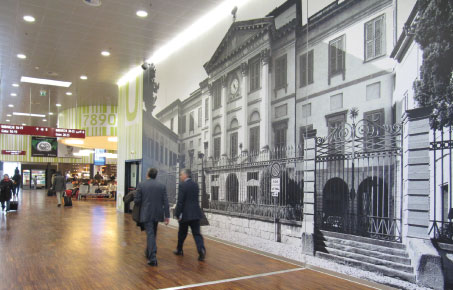
Ratti: “All passengers travelling from Milan Bergamo can now enjoy a practical airport with all the modern comforts and facilities which make the travel experience pleasant and special.”
In order to cater for this sharp increase in demand, SACBO – the airport’s operator – has a long-term airport development plan in place, which has already brought about a number of improvement and expansion projects and will ultimately see a total of €190 million invested by 2015 – all self-financed by the operator.
Mario Ratti, president, SACBO, explained: “This plan includes the existing terminal extension with a new check-in area, a new baggage handling system, new boarding gates, more security checkpoints and a new arrivals area, a new multi-level car park with over 6,000 spaces and an apron enlargement with new aircraft stands.”
Around €15 million has been invested in the terminal expansion project alone and, thanks to the investment, the terminal area has more than doubled from 30,000sqm to 63,500sqm.
While the initial check-in area development was completed in 2007, the terminal enlargement project was completed in March this year. As part of this, the Schengen boarding area contains four new gates, while a new food court, boasting seven new bars and restaurants, has also been completed.
Furthermore, the retail offering at the airport has also been overhauled, with the addition of 14 new shops, including various Italian fashion brands and a large duty free store.
Ratti continued: “All passengers travelling from Milan Bergamo can now enjoy a practical airport with all the modern comforts and facilities which make the travel experience pleasant and special. Furthermore, the new security tracks have noticeably minimised the waiting time and queues.”
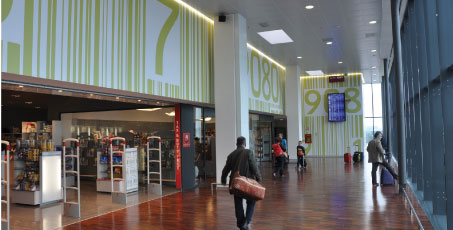
Ravasio: “Particular attention has been dedicated to the signage system. The departure terminal walls are covered with wallpaper featuring the luggage label bar code – IATA BGY – of Orio al Serio Airport.”
The sudden rise in passenger traffic at Milan Bergamo has coincided with the increase in services offered by a number of low-cost carriers, led by the Irish carrier, Ryanair. Since the introduction of the airline in 2002, annual throughput has increased by more than five-fold. In fact, throughout 2009, despite the continuation of the various construction projects, the airport still recorded double-digit passenger growth.
Renato Ravasio, CEO, SACBO, said: “From the start of the low-cost airlines’ flight operations, particularly by Ryanair, Milan Bergamo airport has continually increased passenger movement. The fast growth led to this investment to adapt the infrastructure and it’s very important to continue with these plans. Past and present investment during the difficult period has been, and is, an essential requirement to lay the foundations ahead of the Universal Expo in 2015.”
While various aspects of the airport development plan have already been successfully completed, Ratti explained that work is continuing to progress on a number of other fronts.
He said: “SACBO is still working hard to improve the structure and the available space. Our service level is one of the highest in Italy and we want to continue to deliver it to our customers. For the near future, we’re planning a renovation of the landside area with new floor tiles, new lights, new signals and new colours, and more space in front of the security area. The new car park will be just next to the arrivals area within less than five minutes and we’re also planning a tarmac extension with new aircraft stands and a new road layout in front of the terminal.”
Ravasio echoed this desire to further improve Milan Bergamo’s already high passenger standards. He said: “The plan has been developed to guarantee a more comfortable and friendly environment, a larger surface area, and a high level of services and safety. Particular attention has been dedicated to the signage system. The departure terminal walls are covered with wallpaper featuring the luggage label bar code – IATA BGY – of Orio al Serio Airport. The colour of the code determines the individual areas: green for the Schengen flights area, orange for extra-Schengen flights, and blue for the area around the security check and passenger movement areas.”
With a very specific plan in place for the coming years, Ratti is confident that Milan Bergamo is well positioned to build on its current standing among its Italian peers. Having experienced unprecedented growth over the course of the last 10 years, SACBO now has high ambitions as it aims for the next major milestone.
“Past and future works will allow us to have at our disposal an infrastructure able to handle an annual capacity of 10 million passengers,” he said. “The total works programme is oriented to prepare the airport for challenges in years to come and to ensure it’s ready to meet the air transport industry’s expectations.”
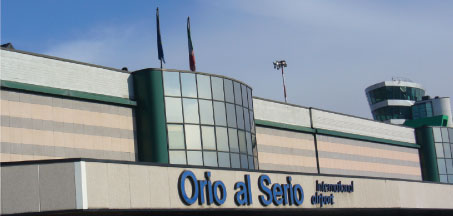
By the year 2015, a total of €190 million will have been invested in Milan Bergamo – all self-financed by SACBO.
Naples Airport
At the beginning of this year, Naples Airport inaugurated its newly constructed Terminal 2 to mark a major milestone in the airport’s development. The opening of the terminal – which is dedicated to charter flights – came after more than 10 years of constant improvement works, which has seen the addition of a new cargo terminal, the expansion of the arrivals, departures and boarding areas and the repaving of the runway, among a number of other major developments.
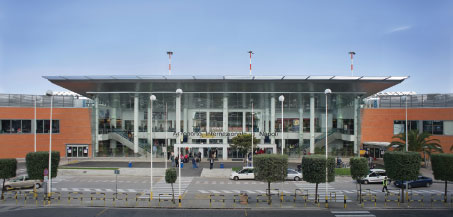
GESAC has already invested €209 million in Naples Airport and further developments – including an extension of the arrivals and departures area – are planned for 2012.
Mauro Pollio, president, GESAC, said: “Following the privatisation and entry of BAA, a firm commitment was made. Now, as a result, high-end infrastructure -especially in terms of security, safety and the quality of services offered to the passengers – has been made available to the territory and this is primarily owing to the considerable investments which were made during these years.”
While some €209 million has already been invested by GESAC, a number of further developments are planned for 2012. As well as a reconfiguration of the commercial offering, a further extension of the arrivals and departures area is also scheduled, along with the restructuring of the aprons and the construction of a new multi-storey car park.
Venice Airport
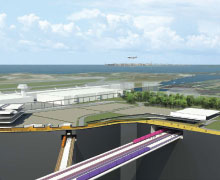
Marchi: “The intermodal terminal – air-rail-road – will be located at the heart of the airport area and will guarantee accessibility to high-speed rail, as well as the metro and regional railways.”
Since 2002, Venice Marco Polo Airport has been the subject of various developments as part of its master plan, which sets out a vision for the airport beyond the year 2020.
Under the operation of SAVE S.p.A, the development will see approximately €500 million invested in renovating and expanding the airport’s facilities, with the latest stage set to get underway over the course of the next few months.
Enrico Marchi, president, SAVE, said: “ENAC has recently approved a recalibration of our tariffs that we hope will soon become effective, which in turn permits us to enter a new phase of our investment plan.”
Last year, Venice Airport handled in excess of seven million passengers and since the construction of a new passenger terminal eight years ago, it has undergone a radical transformation, with the addition of a new cargo building, hangar and parking areas, as well as the doubling in size of the dock area.
According to Marchi, a vital component of this master plan is the focus on combining “functionality and technology, with a pleasurable travel experience”. This, he said, is epitomised by the “wooden floors and ample views over the Venetian lagoon, which replicate an experience similar to that of a five-star hotel, where passengers feel like guests”.
Referring to the latest stage of the development – which will see a further injection of €60 million – Marchi explained: “We will build the new people mover that will link the docks and parking garage to the terminal and will continue on to the new stadium and the new branch of the casino, which will be built on the areas just outside of the airport. In the coming years, we will also expand the terminal and baggage handling system, linked to the higher passenger numbers expected.”
A vital component of the overall vision for the airport is the Venice Gateway – a futuristic water gate, to be constructed on the airport’s dock area. The project, which was designed by renowned architect Frank O. Gehry, consists of a 350-room hotel, a water-transport terminal and a state-of-the-art exhibition and conference centre.
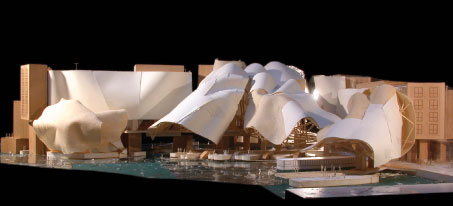
The Venice Gateway project will see the construction of a 350-room hotel, a water-transport terminal and an exhibition and conference centre.
Furthermore, advanced plans for an intermodal terminal are also in place. “This will help the airport, and the airport city, grow,” Marchi explained. “The intermodal terminal – air-rail-road – will be located at the heart of the airport area and will guarantee accessibility to high-speed rail, as well as the metro and regional railways.”
As part of the Trans-European Transport Network (TEN-T) project, the importance of the intermodal hub project has been recognised by the European Commission, which has funded the feasibility study with €2.67 million – the only Italian intermodal project to be financed in this way.
With the master plan firmly setting out the ambitious aims of the airport for years, even decades, to come, SAVE has a very clear vision for Venice Marco Polo Airport. Marchi explained: “The ultimate vision is the realisation of a modern airport city that is of utmost importance to the economic development of the territory. The gradual infrastructure growth, combined with an ever-increasing number of flights and destinations, will result in the airport’s reinforcement as the third intercontinental airport in Italy, proposing an alternative connecting point for southern Italy and the Mediterranean.”
Verona Airport
As part of the effort to increase passenger numbers from the current figure of just over three million per annum, Verona Valerio Catullo Airport has adopted both a short-term business plan and a long-term master plan.
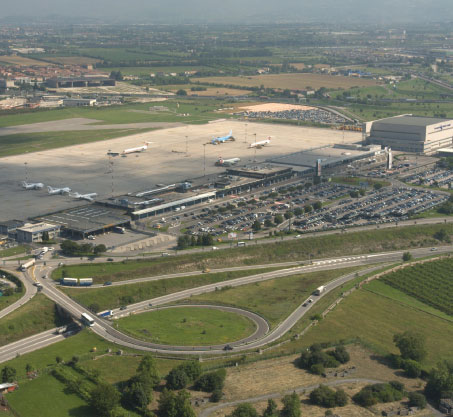
Soppani: “The airport will continue to focus on different types of traffic but it has adopted a commercial policy more open towards low-cost carriers.”
The opening of a new arrivals terminal in 2006 triggered a range of infrastructure developments across the airport and this has led to the recent submission of a business plan for development between 2010 and 2014, while an airport development plan for the period up until 2048 has also been submitted to ENAC for approval.
Massimo Soppani, general manager, Verona Airport, said: “The opening of the arrivals terminal doubled the space available, providing a high level of passenger service and hospitality. Furthermore, the construction of the new arrivals terminal allowed a further development of the departures area, which was expanded with an additional 3,000sqm.”
According to Soppani, the “business plan for 2010-2014 is based on clear and well defined policy guidelines”. The main features include the development of low-cost traffic, an increase in the economic contribution of non-aeronautical revenues and a phasing out of the handling market.
In recent months, various other projects have been completed at the airport and by the end of this year further upgrades will also come to fruition. Soppani explained: “Airside has seen the expansion of the airbase, which is necessary to increase safety standards, the improvement and partial resurfacing of the runway, and the construction of a station Apron Management System.
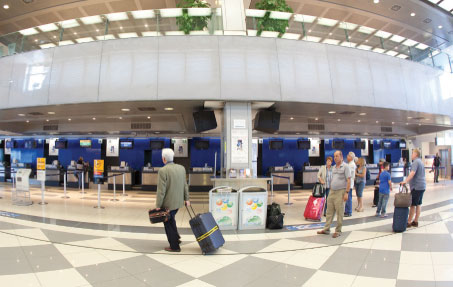
Verona Airport currently has a four-year business plan in place, which outlines an ambition to increase passenger numbers to 4.5 million by 2014.
“The airport is also currently engaged in works for the refurbishment and creation of new areas and spaces dedicated to passengers and to airport operations in the departures terminal. During June, works will be completed and a new shopping gallery within the terminal will be inaugurated.
“These infrastructure investments, joined by commercial efforts, have the dual purpose of making the airport fit to receive the best possible transit flows and also to strengthen new areas of revenue.”
Among other works that have also been completed are a new low-cost parking facility, improvements to the surrounding road network and the construction of a new ceremonial hall.
Having handled slightly more than three million passengers in 2009, Soppani explained that attracting more low-cost services could hold the key to increasing this figure by a further 50% over the next four years. “The airport will continue to focus on different types of traffic,” he said. “But it has adopted a commercial policy more open towards low-cost carriers (LCCs). For this reason, and in line with the business plan, we’re working to develop an existing airport structure to host low-cost traffic in order to separate the traffic flows, allowing both traditional carriers and LCCs a service in line with their specific needs. The diversification of traffic flows through infrastructure investments specific to different users will allow our airport to always be in line with the needs of both carriers and passengers.”
Bologna Airport
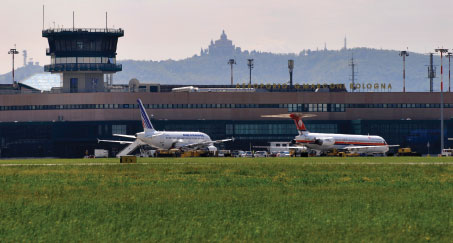
A total of €370 million will be invested as part of Bologna Airport’s 15-year master plan.
Having registered record passenger numbers of almost 4.8 million in 2009, Bologna Airport’s 15-year master plan has recently been redesigned in order to achieve an eventual capacity of 10 million passengers.
As part of the first phase of the €370 million investment, the construction of five new stands is already underway and towards the end of the year, work will also begin on the restructuring of the current terminal building and the construction of a modern baggage handling system.
Armando Brunini, general manager, Bologna Airport Company, explained: “The redesigned master plan was approved by ENAC in late 2009. We’re now beginning a consultation process with local authorities and interested parties and preparing the environmental impact study necessary to obtain final authorisation to implement the master plan.
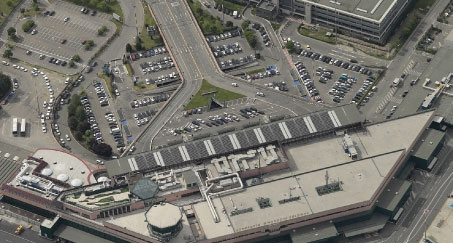
Brunini: “The fast and easy connection to high-speed trains should enlarge our catchment area and contribute to limiting congestion of the road system.”
“In 2009, Bologna Airport experienced double-digit passenger growth despite the economic crisis. In any case, we would have stuck to our investment commitments to avoid a capacity crunch in the medium-to-long-term.”
Another aspect of the initial phase of the project will see the construction of a people mover transit system, which will connect the high-speed rail service to the terminal in only seven minutes.
The €130 million investment over the course of the first five years of the project will bring Bologna Airport’s annual capacity to more than seven million and according to Brunini, will provide the passenger with a more enjoyable airport experience. “The restructuring of the current terminal will completely change the passenger experience,” he explained. “Flows will be optimised, there will be more commercial space and shopping opportunities, and as fast as possible we will introduce technology to streamline throughput. Also, the fast and easy connection to high-speed trains should enlarge our catchment area and contribute to limiting congestion of the road system.”
Perugia Airport
Managed and operated by SASE S.p.A, Perugia Airport is the only airport in the region of Umbria dedicated to commercial flights and in order to achieve its target of serving 250,000 annual passengers by 2012, a major redevelopment project is currently ongoing.
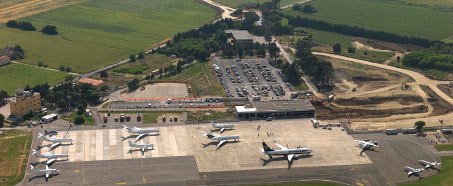
The construction of a new 5,000sqm terminal will play a major role in Perugia Airport’s drive to serve 250,000 annual passengers by 2012.
At the heart of this plan is the addition of a new terminal, which will include two waiting rooms – one for departures and one for arrivals – as well as a commercial gallery and two office areas. In total, the building will cover an area of more than 5,000sqm.
In addition, the project also involves the extension of the current apron for commercial flights and the creation of a second apron for general aviation.
Financed by the Council of Ministers of Italy, the investment also extends to the surrounding road network as the airport aims to establish quick connections between the airport area and the provinces of Umbria.







